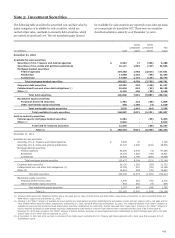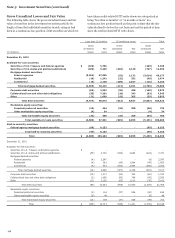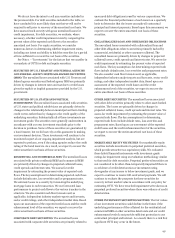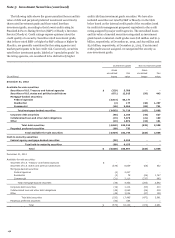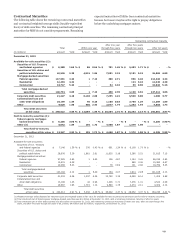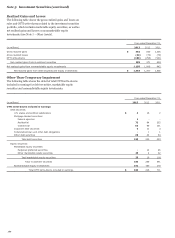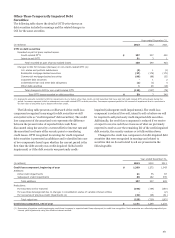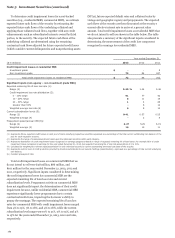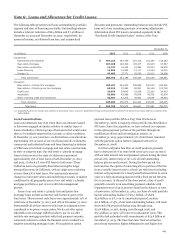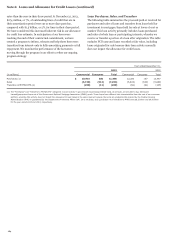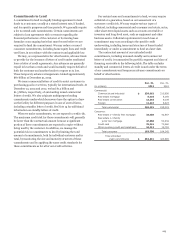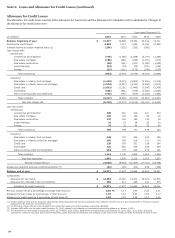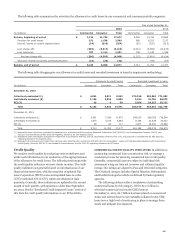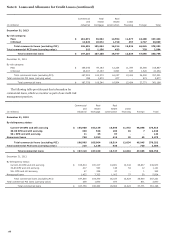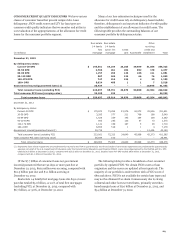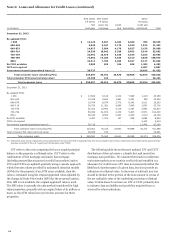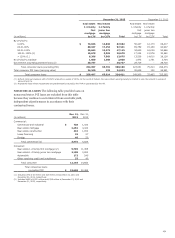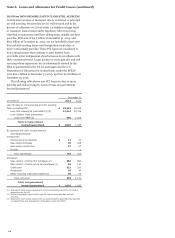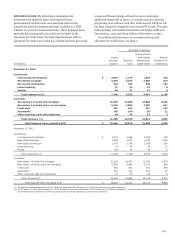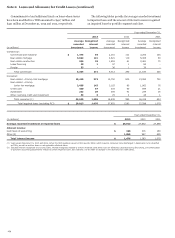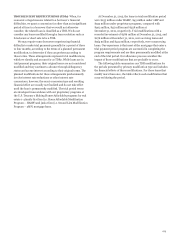Wells Fargo 2013 Annual Report Download - page 167
Download and view the complete annual report
Please find page 167 of the 2013 Wells Fargo annual report below. You can navigate through the pages in the report by either clicking on the pages listed below, or by using the keyword search tool below to find specific information within the annual report.
Commitments to Lend
A commitment to lend is a legally binding agreement to lend
funds to a customer, usually at a stated interest rate, if funded,
and for specific purposes and time periods. We generally require
a fee to extend such commitments. Certain commitments are
subject to loan agreements with covenants regarding the
financial performance of the customer or borrowing base
formulas on an ongoing basis that must be met before we are
required to fund the commitment. We may reduce or cancel
consumer commitments, including home equity lines and credit
card lines, in accordance with the contracts and applicable law.
We may, as a representative for other lenders, advance funds
or provide for the issuance of letters of credit under syndicated
loan or letter of credit agreements. Any advances are generally
repaid in less than a week and would normally require default of
both the customer and another lender to expose us to loss.
These temporary advance arrangements totaled approximately
$87 billion at December 31, 2013.
We issue commercial letters of credit to assist customers in
purchasing goods or services, typically for international trade. At
December 31, 2013 and 2012, we had $1.2 billion and
$1.5 billion, respectively, of outstanding issued commercial
letters of credit. We also originate multipurpose lending
commitments under which borrowers have the option to draw
on the facility for different purposes in one of several forms,
including a standby letter of credit. See Note 14 for additional
information on standby letters of credit.
When we make commitments, we are exposed to credit risk.
The maximum credit risk for these commitments will generally
be lower than the contractual amount because a significant
portion of these commitments are expected to expire without
being used by the customer. In addition, we manage the
potential risk in commitments to lend by limiting the total
amount of commitments, both by individual customer and in
total, by monitoring the size and maturity structure of these
commitments and by applying the same credit standards for
these commitments as for all of our credit activities.
For certain loans and commitments to lend, we may require
collateral or a guarantee, based on our assessment of a
customer’s credit risk. We may require various types of
collateral, including commercial and consumer real estate, autos,
other short-term liquid assets such as accounts receivable or
inventory and long-lived asset, such as equipment and other
business assets. Collateral requirements for each loan or
commitment may vary according to the specific credit
underwriting, including terms and structure of loans funded
immediately or under a commitment to fund at a later date.
The contractual amount of our unfunded credit
commitments, including unissued standby and commercial
letters of credit, is summarized by portfolio segment and class of
financing receivable in the following table. The table excludes
standby and commercial letters of credit issued under the terms
of our commitments and temporary advance commitments on
behalf of other lenders.
Dec. 31, Dec. 31,
(in millions) 2013 2012
Commercial:
Commercial and industrial $ 238,962 215,626
Real estate mortgage 5,910 6,165
Real estate construction 12,593 9,109
Foreign 12,216 8,423
Total commercial 269,681 239,323
Consumer:
Real estate 1-4 family first mortgage 32,908 42,657
Real estate 1-4 family
junior lien mortgage 47,668 50,934
Credit card 78,961 70,960
Other revolving credit and installment 24,213 19,791
Total consumer 183,750 184,342
Total unfunded
credit commitments $ 453,431 423,665
165


